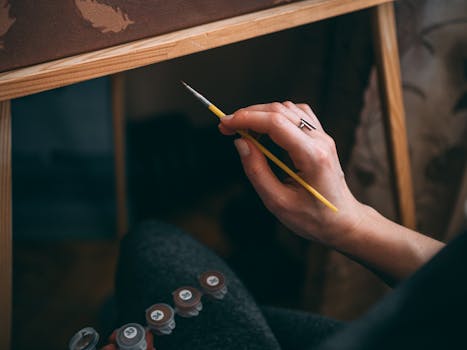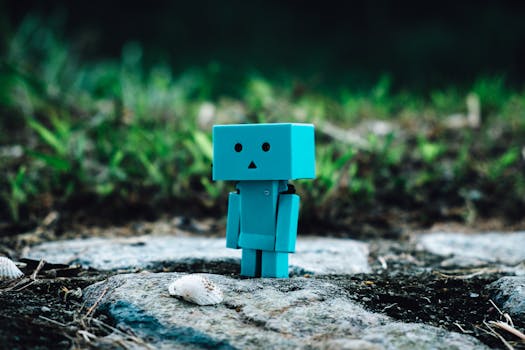Character Design Basics for Indie Game Developers: Enhance Visual Design for Game Characters and Streamline the Design Process
Character design basics matter for indie game developers. These skills help create unique characters that attract players and boost game quality. Understanding how to design characters well can engage your audience and grow your community. In this guide, we share essential tips and best practices to enhance visual design for game characters and streamline your design process.
Understanding Character Design Basics - Laying a Strong Foundation
Character design is crucial in creating memorable games. A well-designed character helps players connect emotionally, enhancing their gaming experience. Here’s what you need to know to get started.
Key Takeaways:
- Silhouette is essential for visual recognition.
- Understand basic terminology in character design.
What is Character Design?
Character design involves creating the appearance and personality of a character in a video game. It includes their look, movements, and the way they interact with the game world. A strong character design makes a game memorable.
Importance of Silhouette
A character’s silhouette is their outline. This outline should be unique and easily recognizable. Think of how you can identify a character like Mario from just his shape. A good silhouette helps players recognize characters quickly, especially in fast-paced games.
Checklist for Character Design:
- Conceptualize: Start with a rough idea of what your character is. What is their role? Hero, villain, or sidekick?
- Silhouette Sketching: Draw quick silhouettes. Focus on different shapes to find a strong visual identity.
- Basic Features: Decide on the character’s age, gender, and main traits.
- Color Palette: Choose colors that reflect the character’s personality. Bright colors can represent energy, while dark colors may symbolize mystery.

Mastering Visual Design for Game Characters
Effective visual design is not just about looks; it’s about enhancing gameplay and storytelling. A well-designed character can tell a story without saying a word.
Key Takeaways:
- Visual design affects gameplay.
- Colors and shapes convey character traits.
How to Enhance Visual Design
Visual design includes color theory, shapes, and lines. Each element affects how players perceive the character.
- Color Theory: Different colors evoke different emotions. For example, red can signify danger or passion, while blue may convey calmness. Choose colors that match your character’s personality and role in the game.
- Shapes: The shapes you use can suggest traits. Round shapes can give a friendly vibe, while sharp angles may make a character look more aggressive.
- Lines: Lines can guide the player’s eye. Use bold outlines to highlight main characters, making them stand out against the background.
Influential Game Character Design Styles
Look at characters from successful franchises. For example, the Pokémon franchise uses bright colors and simple shapes to appeal to a broad audience. Their designs are friendly and approachable, making them relatable to players of all ages.
Before & After Example
Consider a character design that initially had a cluttered outfit. By simplifying the design, focusing on a clean silhouette, and choosing a cohesive color palette, the character becomes more appealing and easier to recognize. This transformation highlights how effective design can enhance both the character’s impact and gameplay experience.

Streamlining the Character Design Process in Video Games
Creating characters can be a complex task. Streamlining this process can help indie developers work more efficiently. To help with this, consider exploring unique game character design techniques.
Key Takeaways:
- Follow a step-by-step design approach.
- Use community feedback for improvement.
Step-by-Step Guide for Character Design
Here’s a simple process to design characters from start to finish:
- Research and Inspiration: Look at existing characters for inspiration. What works? What doesn’t?
- Ideation: Brainstorm ideas. Sketch multiple versions of your character’s silhouette and key features.
- Refinement: Choose the best designs and refine them. Focus on details like clothing and accessories.
- Feedback: Share your designs with friends or online communities. Collect feedback and be open to suggestions.
- Final Execution: Finalize the design and create a high-quality version using digital tools.
Best Practices for Efficient Design
- Use digital tools like Photoshop or Procreate for easy adjustments.
- Set specific times for each design phase. This helps keep the project on track.
- Keep a design journal to jot down ideas and sketches. This can be a great reference later on.
Sample Timeline for Design Projects
- Week 1: Research & Ideation
- Week 2: Sketching & Refinement
- Week 3: Community Feedback
- Week 4: Final Design and Polish

Drawing Inspiration from Diverse Sources
Diversity is vital in character design. It brings authenticity and relatability to your game characters.
Key Takeaways:
- Cultural influences enrich character design.
- Diversity appeals to a broader audience.
How to Incorporate Cultural Influences
Look beyond your immediate surroundings. Research different cultures, traditions, and stories. This can inspire unique character traits and backstories.
- Study Different Cultures: Read about various cultures and their folklore. This can spark ideas for character backgrounds.
- Create Characters with Depth: Design characters based on diverse influences. This can make them more relatable and interesting.
- Connect with Players: Diverse characters can resonate with a wider audience, helping players feel represented in your game.
Examples of Successful Diversity in Indie Games
Games like “Celeste” and “Hades” showcase diverse characters that reflect various backgrounds and experiences. These characters add richness to the story and engage players on multiple levels. Furthermore, enhancing character development in video games can lead to even more engaging narratives.
By understanding and applying these character design basics, indie developers can create compelling and memorable characters that resonate with players. Embrace the process, learn from feedback, and let your creativity shine!
FAQs
Q: How can I create a strong character silhouette that makes my game characters instantly recognizable?
A: To create a strong character silhouette that makes your game characters instantly recognizable, focus on using bold, distinct shapes and forms that clearly define each character’s uniqueness. Ensure that the silhouettes communicate the character’s personality and traits, and consider how they will stand out against backgrounds and other characters in the scene.
Q: What practical steps can I take to incorporate diverse cultural elements into my video game character designs?
A: To incorporate diverse cultural elements into your video game character designs, conduct thorough research on the cultures you wish to represent, focusing on their clothing, hairstyles, and traditional symbols. Collaborate with cultural consultants or individuals from those communities to ensure authenticity and sensitivity in your designs, while also considering how these elements influence the character’s backstory and personality traits.
Q: What are the key stages of the design process for indie game characters, and how should I approach each stage?
A: The key stages of the design process for indie game characters include concept development, visual design, and animation. Begin by sketching out character ideas and defining their roles within the game environment. Then, create detailed visuals using graphic software, ensuring to consider how characters will be viewed in-game. Finally, focus on realistic movement and animation, taking care to avoid issues like the uncanny valley by ensuring fluid and believable character actions.
Q: How do I balance classic art principles with modern game design trends when crafting characters from scratch?
A: To balance classic art principles with modern game design trends when crafting characters, focus on strong silhouettes and clear shapes that convey personality while incorporating contemporary aesthetics and animations that resonate with current player expectations. Additionally, ensure that the character’s design remains functional for gameplay, allowing for customization and movement that enhances the player’s experience.
